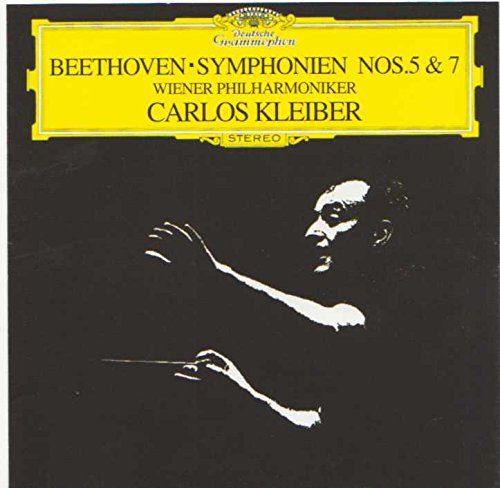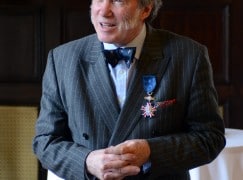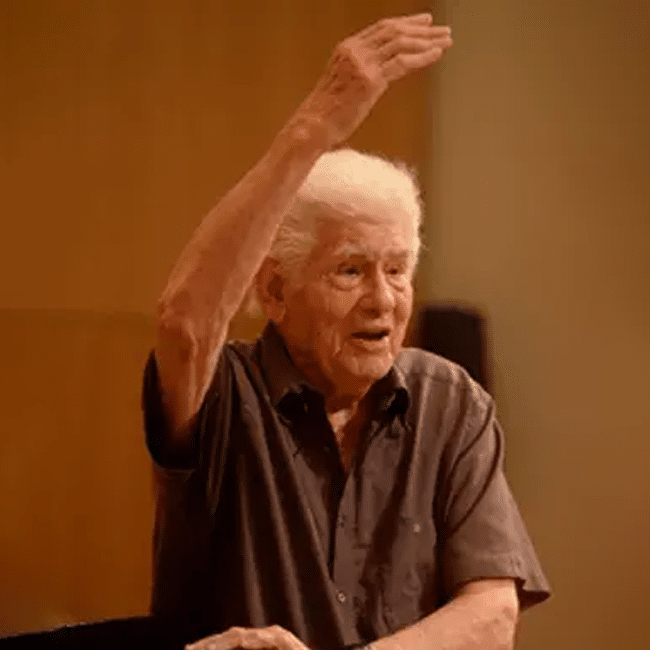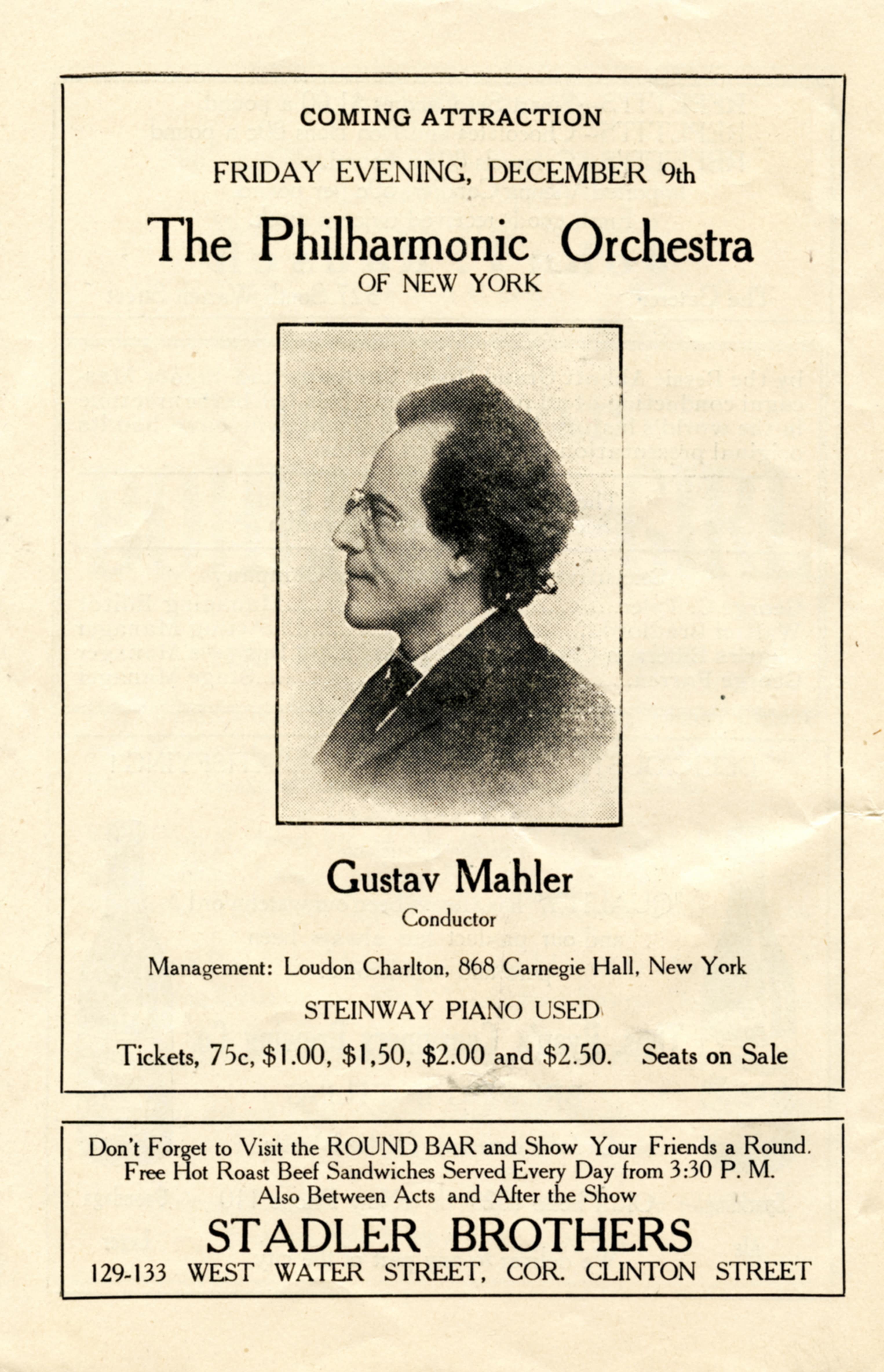Beethoven’s 7th in Covid times
mainWelcome to the 81st work in the Slipped Disc/Idagio Beethoven Edition
Seventh symphony, opus 92 (part 4*)
Before we come down to the final selection, pianist Lori Kaufman in Chicago has sent us these thoughts of pressing relevance:
One of the most bitter casualties of the Great Virus of 2020, Beethoven lost out on all of his 250th birthday celebrations worldwide. We have donated the ticket costs and cancelled our travel, and all that is left is for us to play some of the late bagatelles on our piano that desperately needs a socially distanced tuning, or to scroll through an overtaxed youtube to get our fix of this titan, the man who changed sonata form forever and transformed the symphony into an expression of indefatigable human triumph. (And couldn’t we all use a little human triumph about now?) Norman tells me that the seventh symphony is up next, and we already know better than to offend our audience by claiming that one version is the “best ever,” and so I will leave it to you to decide which Beethoven 7th YOU need right now, in this bizarre time.
Does your body need sunlight and vitamin D to ramp up your immune system? Then go for Carlos Kleiber’s 1976 Vienna recording. On everyone’s top ten list, this is the version that radiates light and love and sprinkles irresistible charm at each barline. Each note of the ascending scales in the prologue is a puff of Schlag atop rows and rows of Sachertorte. As the fourth piano concerto seems to say everything there is to say about G major, this symphony is the house that holds A major, with room after room of its joy, its spirit, its hope. You won’t be able to stop yourself from whistling along with the jaunty flute when it presents the theme. If you want to obliterate the dark days of quarantine, this is the recording for you. You won’t get bogged down in the sadness of the second movement because Kleiber takes it at a cheery clip that hypnotizes you into the soothing balm of the major section. There is no time to despair, the third and fourth movement are soon there to take your cares away with their exuberance. This is the symphonic metaphor of putting on your bathing suit for the first time in summer.
Are you feeling sentimental, lamenting the “good old days?” Watch Reiner’s video with Chicago from 1954. Oh Fritz, with your toy soldier right arm, mechanically moving up and down while the REAL conducting is done with your eyes. Wait, there is Janos Starker at the front of the cello section! And Ray Still’s brilliant predecessor, Florian Mueller! It’s a pageant of the greats, with close ups in all the right places. You will have a lot of fun watching Reiner and his shocking economy of movement. He gets magisterial things out of the orchestra using only his eyebrows. Listen to the way he builds momentum in the prologue. Those ascending passages transform the humble scale into profound statements on humanity’s greatest accomplishments. Reiner’s scope is unparalleled. Watch the whole thing and you will be rewarded in the climactic end by seeing him mopping his face and then frantically trying to stuff the handkerchief back into his lapel pocket before anyone notices that he’s actually human.
Do you need an intellectual challenge? Have you already conquered the chemistry of sourdough baking, having mastered the boule, now using your starter in focaccia and even pancakes? Okay, do this: Put on George Szell and the Cleveland Orchestra and I guarantee you will hear notes that you never knew existed in this piece. Did you write your dissertation on this symphony? Szell will show you passages and lines you were not aware of. His is the only ensemble that sounds like an alien with twenty different distinct voices, all playing as one sentient being. The clarity is astounding, and never gets old. You will literally feel your brain cells multiplying.
Are you stir crazy, and would do anything to get out and go to the theatre? Watch the Hollywood version of this piece conducted by Leonard Bernstein in 1978. You will have all the drama and passion and intrigue you crave. I hope you have some microwave popcorn somewhere in the back of your pantry. Put some lip gloss on, dress up and make it into an event. After all, this is the only outing you’ve had in three months! Watch Lenny talk about Beethoven’s proclivities directly into the camera, and imagine that you will brush elbows with him at the reception later.
Are you looking for meaning to this madness? Have you already cleaned out every junk drawer in your home and organized your books according to size, shape, and the colors of roy g biv? Nobody can tame chaos like Arturo Toscanini. Whether you prefer the 1935 BBC or the 1936 NYP version (both have astounding merits), you will be blessed with order finally restored to our sorry universe. No need for a dangerous visit to the chiropractor, Toscanini will realign your limbs and sinews down to a cellular level. A master class in form, no tonic chord is played as a dominant, no dominant is without its drama, and your sanity is refreshed by every successive triumphant harmonic resolution. At certain points, Beethoven’s notes don’t even sound like they are played by instruments, but by some natural sonic emission of Nature herself. Put your trust in Toscanini to set things right.
Are you grieving? Do you need someone to sit with your sadness, someone who understands? Furtwängler does. His 1943 Berlin recording plummets to the lowest despair of humankind. You have never heard so much pain and pathos in this second movement. He takes it sloooow, and each octave rise in the strings grows even more mournful until its almost unbearable. This will accompany whatever suffering you feel. In the outer movements, the timpani goes to hell and back to save your soul. You will find what you need in this devastating recording. And then you will feel better! Do you need to hold on to some form of hope?
But what if you simply need to hold on to some form of hope? Are you feeling like your life will never be more than a treacherous five minute walk outside to the mailbox? Then consider doing something radical: Leave the old wonderful adored masters aside for 38 minutes and go on facebook and watch Het Concertgebouworkest perform their first live concert since this whole nasty business shut down music everywhere. Spanish maestro Gustavo Gimeno leads the stoic and dedicated musicians, one to a stand, 1.75 metres apart, as they play a piece that goes from joy to despair and everything in between. Allow them the dignity to get back to their life’s work, with a symphony that has a special meaning for any musician. There is no audience in the hall but you are there, proving that music cannot be shut down. Happy Birthday, Beethoven. We certainly miss you.
Lori’s recommendation of the 1943 Furtwängler concert in Berlin is endorsed by most of our experts. Costa Pilavachi writes from Athens: ‘The most urgent and exciting, Not a single note played routinely. As if lives depend on it.’ What Furtwängler achieved, as he did so often, was to convey the spirit of the moment and, at the same time, a sense that nothing in this symphony could ever be performed differently from the way they were playing it now. There is something demagogic about Furtwängler’s music making, yet also consensual. Many in the audience would carry this concert in their heads for what remained of their lives in the last two years of war.
Indisputable as Furtwängler’s account might be, the interpretations of his antipode Arturo Toscanini possess even greater power and authority. Leonard Slatkin is gripped by the Maestro’s 1935 concert with the BBC Symphony Orchestra: ‘It grabs me in a way that no other performance does. The balances are amazing, even with the limited technology of the time. Edge of your seat listening at its best.’ In my listening, the Allegretto in particular conveys vast human compassion without a trace of the German conductor’s self-pity. Somewhere between these two peaks lies an eternal truth. And not just between these two.
Erich Kleiber‘s austere 1950 performance in the Amsterdam Concertgebouw was long held to be the benchmark interpretation – poised on a knife-edge of human destiny. ‘ His sense of proportion and ability to elicit differentiated gestures for every motif is, to me incomparable; on top of which, his elegance, exuberance and own sense of wonder at the music is so intense and moving,’ comments the Danish conductor and violinist Nikolaj Znaider. Austerity governs the finale: this is no invitation to the dance.
Quarter of a century later, Carlos Kleiber slew his father Erich with a performance so calisthenic it makes listeners leap from their seats and whirl round the room with whoever is available. Carlos Kleiber’s account of the Seventh with the Vienna Philharmonic was issued together with his interpretation of the Fifth, which many critics regard as definitive (an awkward designation for so fluid an art as orchestral music) and which grips us all with a sense of wonder. This Deutsche Grammophon production might well qualify as the most important classical release of all time. The Seventh, on the seventh hearing, acquires an aura of ne plus ultra.

Except that my Spanish colleague Juan Lucas, editor of Scherzo magazine, believes the May 1982 Carlos Kleiber concert in Munich is even more overwhelming. Try it.
This debate may never end.
* Previous parts of this discussion can be read here.





Is there a way to share views with Kaufman? i would like to ask him (or her) about some of the more recent versions of the Seventh.
I am keen to know his or her thoughts on Chailly, Gardiner’s two versions, Immerseel, the two Harnoncourt recordings (COE and Vienna Philharmonic) and Antonini’s Kammerorchester Basel version. I like it when conductors nod to Kleiber II but also suggest The Rite of Spring in the primal rhythms.
Hello Yi Peng Li, as Norman has mentioned so many fine recordings in this four part series, my post was not meant to be an exhaustive list. I just wanted to highlight how music can be soothing balm in difficult times. I don’t know where you are, but here in America we are in dire need of healing, on many levels. Be well, LK.
I am in Singapore.
Yi Peng Li, i am always so happy to meet Singaporeans. I love SG, i lived there from 2010-2014, first on Lloyd Road and then on the top floor of the Cathay. Those were great times, I would love to go back and visit. Be well!! – LK
The Carlos Kleiber seventh for me.
The first version I bought was Hans Schmidt-Isserstedt with the Vienna Philharmonic and I rate it highly.
The Carlos VPO recording was NOT issued with the 5th, that was the reissue
I dug up from my collection the Carlos VPO version issued on its own, i.e., not coupled with the 5th, in 1976. This is exactly what one sees if one click Norman’s link.
I can’t disagree with praise of any of the top picks. Aside from them, three others I have found particularly rewarding are Ivan Fischer (best I know of from the last twenty years), Monteux with the LSO, and Davis in Dresden.
I love the Monteux with LSO!
Extremely perceptive comments from Costa Pilavachi on Furtwaengler’s 1943 BPO live broadcast. I agree with others on Furtwaengler”s essential qualities in the Seventh and in general., with still a soft spot for Charles Munch and Boston SO mono with those two amaing horns, for once as prominent on record as they need to be in the hall. I’m glad eto see it remembered and mentioned in the posts.
After Furtwaengler, I simply hear nothing extraordinary about Carlos Kleiber in this, or his Fifth, Brahms Four, Schubert Eight, Tritan, &tc. Like Abbado, he smilehis s a lot. , certainly not be Furtwaengler’s standards. Like bbado, he smiles a lot. Reiner, Toscanini, Furtwaengler, Karajan never. Bruno Walter a little, when Mozart also smiled.
Hi Edgar,
Finally there’s something we can agree to disagree about!
And his name is Carlos Kleiber.
His Tristan with Price and Kollo is one of my two all-time list-toppers (the other one being Flagstad and Melchior in their mid-career primes with Reiner at Covent Garden). This is Kollo’s finest recording (along with his Das Lied von der Erde with HvK), and Price is mind-boggling – she actually sounds like a young princess while singing with firm, true beauty all the way through. I find CK’s pacing exciting and ideal.
CK’s Traviata is the all-time best. Callas’ interpretation may have a slight edge over the superb Cotrubas, but in none of Callas’ Traviata recordings was she in the company she deserved. Domingo was at his considerable best for CK. Toscanini’s (best-conducted) Traviata found the great Albanese in sub-par voice on the day, and moreover is saddled with the lumpish and elderly-sounding Peerce. CK’s tempi are just right in this at first maniacally fizzy, then tragic work, and are very Toscanini-like.
And CK’s appearances at the VPO New Year’s concert are equaled only by those of Karajan and Harnoncourt.
As to CK’s Seventh Symphony? Perhaps it’s not my favorite (see my other comment), but it’s very good.
I’m not quite sure what to make of your comment that “he smiles a lot”. ???
I cheerfully lodge a Justice Holmes dissent on Carlos Kleiber, a blind spot perhaps, but I have reservations even about Flagsta and Melchior. For me Melchior’s Siegmund is best, for Bruno Walter in 1936-38 in Vienna with Lotte Lehmann and Hans Hotter singing his first Wotan, even with with a second cast and Seidler-Winkler from Berlin in the last scene of aAct II. My favorite parts of ‘tristan” are Koenig Marke’s monologues, but only if Hotter sings them, in good voice. I even have a Teatro Colon recording in poor sound with Kipnis and the other Kleiber
I’m pretty happy with Furtwaengler’s EMI, but am not the right person to talk to about tristan, where i part company even with thomas Mann.
I do have most or all of the 2936 London Ring and Tritan with those marvelous singers, and have seen Tristan with Solti/Helena Braun/Frankfurt Opra and Gosta Windbergh/Jane Eaglen/Chicago Lyric Opera, which I didn’t like except for King Mark … “Tot enn alles … ALLES tot!, a week before Windbergh collapsed in Vienna and died. I found Eaglen equally mis-cadt as Brunnhilde in her Walkuere here. But, then, no-one is perfect, least of all your faithful co-res[pmdemt/
Orchestrally I prefer the live Act II and III from Berlin with Furtwaengler, espcially the prelude to Act III.
Are you out of house confinement yet?
Yes, Edgar, the Walkuere act I with Melchior/Lehmann/Walter is desert-island material.
Interesting choice that, Koenig Marke’s monologues, for your favorite Tristan bits.
Hotter was a superb Wotan, even in the Solti Ring when his voice was on it’s last legs.
I’ve never cared for Furtwangler’s EMI Tristan. Flagstad is matronly, and Suthaus, although decent, is only that. Furt himself seemed in a rather diffident mood and not at all his usual volcanic self (I’m thinking of his pre-war BPO Prelude and Liebestod, which are an order of magnitude more involved and involving). It’s well-known that WF did not like the producer of the EMI set, Walter Legge, because Legge was heavily promoting Karajan.
I don’t know the live WF Act II and III from Berlin to which you refer.
I have a really good Tristan recording with Helena Braun, Knappertsbusch conducting, on a Gala CD issue. Braun is superb, as is Kna, and the set is my third favorite.
Jane Eaglen? Nein.
As to the COVID confinement in SF, we are allowed to roam, but masks are required at all times (unless you are in your own car). No outdoor gatherings unless the 6 foot apart rule is followed, and even then I think the number of people is limited. Restaurants have reopened for in-house dining, but the rules are strict: masks on unless you are actually eating, one person at a table unless you are with family members, tables at least 6 feet apart, etc. etc. Restaurants are definitely moving towards a take-out and/or delivery business model.
Fine with me: for now, and until a vaccine is developed, I prefer to remain mostly sequestered, to avoid the hassle, and I eat at home for the same reason. My wife and I are both good cooks, and groceries are pretty much available as in pre-COVID times. And I have the internet, TV/radio, a big library, and my huge recorded music collection.
Thank you, friend Edgar, for inquiring!
Hmm. In the Kleiber/VPO recording, the last movement is exceptionally fine, but there are flaws elsewhere.
As Leonard Slatkin remarked in his interesting post the other day, one of the problems which the Seventh poses for the conductor is to maintain what Slatkin calls the ‘Timpani’ rhythmic figure which dominates the main part of the first movement. There is always a risk that the final note of the figure triplet grows from a sixth of a bar to a quarter of a bar, so that the 6 8 metre devolves into 2 4. As I hear the famous DG record, Kleiber does not entirely avoid this danger: listen especially to bars 201 and following in the development section. One conductor who does get this passage just right, by the way, is the much lamented Jeffrey Tate, in his recording with the Dresden Staatskapelle.
Yes, I ‘rediscovered’ the Tate EMI CD quite recently. He greatly admired the Klemperer Sevenths “even the last one”, he told me (none so far mentioned). His BPO debut was in this work “one of Karajan’s parrty pieces” although they allowed Tate his very different approach.
Very interesting. Since you knew JT, are you able to say why he more or less disappeared from the London scene in the mid 1990s? His concerts with the ECO, and his opera performances at ROH, were some of the highlights of the late 80s and early 90s. And yet, all of a sudden as it seemed, if you wanted to hear him, you had to go to the Netherlands, or Hamburg, or Italy, or even Adelaide. This was mystifying and, for his many local admirers, very frustrating.
One great performance not mentioned, not dissimilar in conception to the Carlos Kleiber, is Klemperer’s mono recording with the Philharmonia (1955) – not to be confused with the later, and inferior, stereo recording, nor the very late recording from 1968.. It is forthright, authoritative and with astonishing drive.
Michael – the 1955 version is in very early stereo. (I agree that it’s preferable to both his later EMI versions.)
Only issued later in stereo of course
Klemperer’s tempos (extremely slow) do not lend themelves to a good reading of the 7th.
I have thoroughly enjoyed all the entries and comments, and note how frequently the same names (the Kleibers, Fricsay, Szell, Toscanini, Furtwangler etc.) keep cropping up. I know for a fact that Charles Munch was fighting a bad cold when he made his recording of the 7th, his debut session with the Boston Symphony. I would imagine there’s a concert performance lurking about that is even better.
One would think that with all these versions to reference, that modern day readings would have a good guide to begin. Yet I am concerned with many of the Seventh performances of recent vintage. I am put off with an abundance of aggression that I hear in many of them, that this aggression tends to thwart the overall joy that Beethoven certainly intended. The upward scale passage in the lower strings can remind one of a barking dog at the junkyard. A good antidote to this aggression is yet another historic recording, yet one legendary conductor that isn’t cited frequently, Felix Weingartner.
Even more than his excellent final version with the Vienna Philharmonic, the humor and joy, not to mention an introduction that is feels like a true “invitation to the dance”, is his 1927 recording with the Royal Philharmonic, available here: https://www.pristineclassical.com/products/pasc414?_pos=1&_sid=c80452384&_ss=r
You say that the recent recordings are too aggressive; I’d counter that some of the analog-era recordings are too polite.
The 7th should be loud and a bit unhinged. The 7th features some of Beethoven’s only uses of fff (the only other places where he uses it are Leonore no. 2 and 3, the 8th, and the “Zapfenstreich” march). Weber of course said that Beethoven was “ripe for the madhouse” after hearing the 7th. If you think a performance is too aggressive, perhaps it simply had Beethoven’s intended impact on you.
I like a lot of the analog recordings, especially Szell, but I wouldn’t want to be without Gardiner’s 2012 live version.
Perhaps if you indicated your association with the BSO you would warrant the red letter name designation. Your comments and on-air interviews are always relevant and informative.
Thanks,
Lovro Von Matacic with the NHK orchestra on Denon jumps off the shelf into my hands quite often. I remember hearing him do it quite wonderfully with the Philharmonia at the Festival Hall in 1983. The Haydn Cello Concerto in C was on the programme with the late lamented Lynn Harrell – two great musicians on the same wavelength that night!
My top 10:
1. Concertgebouw Orchestra/Willem Mengelberg 1936
2. Berlin Philharmonic/Wilhelm Furtwangler 1943
3. Berlin State Orchestra/Daniel Barenboim 2000
4. Royal Philharmonic/Thomas Beecham 1958 (live)
5. Bavarian State Orchestra/Carlos Kleiber 1982
6. London Philharmonic/Klaus Tennstedt 198?
7. Berlin Philharmonic/Herbert von Karajan 1963
8. Marlboro Festival Orchestra/Pablo Casals 1971
9. Vienna Philharmonic/Leonard Bernstein 1979
10. I could list at least half a dozen….
First loves linger, so I keep going back to Bruno Walter’s 1958 “Columbia Symphony” (Los Angeles pickup band) Beethoven Seventh – has anyone else ever captured the Scottish “snap” of the first movement vivace so idiomatically and so thoroughly nailed both the right tempo and the sheer exuberance of the finale?
My close runner-up is Franz Konwitschny’s recording with the Leipzig Gewandhaus Orchestra (c. 1960), which unusually (then or since) takes the repeat in the finale. I believe some reissues edit out the repeat; the 1992 Berlin Classics boxed set retains it.
I second, with assorted reservations, endorsements of Toscanini/NY Phil (get the Pristine Classical remastering), Furtwängler/Berlin 1943, René Leibowitz/Royal Phil, Casals/Marlboro, Zinman/Zürich and Bosso/Mozart14, a nice discovery thanks to this thread. (Interesting, likely revealing, that three of those six, and a number of others’ recommendations, are concert recordings.)
Re: Carlos Kleiber: I’ve always preferred his Concertgebouw video to the Vienna Phil DG audio, not least because his joy in the piece is so palpable visually.
I’ve got no intrinsic beef with historically informed Beethoven, but the Seventh is problematic. Few such recordings convincingly “sing” as well as dance, and the now-prevalent breakneck tempo of the finale sounds more like desperation than music.
* * *
I don’t know whether Norman plans to cover Beethoven symphony cycles on disc, or whether he has and I missed it, but among the many cycles I’ve heard and collected, none remotely qualifies as “definitive.” Pick your symphonies the way Beethoven wrote them: one at a time.
Philips reissued the acclaimed Konwitschny Seventh on its Fontana LP label with, as you say, the repeats cut out to save disc space.
Lori Kaufman: a brilliant essay, and I agree with all of your choices.
I would add to your excellent list Karajan / Philharmonia 1951, Klemperer / Philharmonia 1950s MONO, and Toscanini / NBC 1939.
For balance and a wonderful overall account the Riccardo Muti/Philadelphia Orchestra concert in Japan (on YouTube) has it all. Very thrilling, beautifully put together. Lots of energy.
I also like the Furtwangler and would put it in 2nd place. Yes, the second movement is outstanding (the best of all) but I think the out of whack timpani (overwhelming the orchestra) in the final movement detracts from this account. It is full of energy but I put it second to Muti.
I do think Kleiber is also very, very good but not as good as Muti or the ideosyncratic Furtwangler. I would put him in a tie with Bruno Walter and the NYP; Walter also shows lots of energy and insights.
By contrast, I was disappointed in Toscanini who I thought was pretty straight forward (nothing new or exciting there).
Cantelli was (and I hate to admit I’m that old) the first record I ever bought. Surprise – it still holds up to the best of them. And let’s not forget Blomstedt/Dresden, quite possibly the most joyous rendition that takes all the repeats.
I had forgotten about Cantelli/Philharmonia. Certainly belongs in the first tier.
Everything that’s worth saying about Beethoven has been said. What does it mean to be a “great” composer?
First, I’ll admit a bias, which some of you may share: As much as I have always adored Beethoven, I’ve always felt the 2nd move. marking “allegretto” is a misnomer or simply a mistake. Let’s recall he had very little if any hearing left by then and that many musicians over the years have found many of his metronome marks in various works just too fast; they have used their instinct to find tempos that feel right. The music itself is beyond criticism — it just works best as an adagio. One does not express mourning or pathos at a jaunty pace, as Furtwangler, Klemperer, and others have shown. I think B did intend a slow move. for the 7th; he just mislabeled it — even genius can make mistakes, especially a deaf genius.
Many important and memorable records have been aptly praised here, including some of my favorites:
Fricsay BPO
Giulini CSO
Tennstedt LPO
To those I’ll add a few faves not mentioned:
Abbado VPO
(Decca c.1967)
Cluytens BPO
C. Davis Royal Phil
Steinberg BSO (video)
When Beethoven wrote a funeral march he so marked it. There is nothing inherent in the music of the 2nd movement that makes it one and to so interpret it is arrant aggrandizement. Not only that but to conduct an Adagio there makes no sense in the context of the rest of the work. This is from the same school of misinterpretation that makes a sobbing funereal lament out of Mahler’s love letter to Alma in the Adagietto of the 5th.
I had teachers and friends who performed several times with Kleiber and they all agreed that with Kleiber everything was extreme: it was either the greatest performance ever or it was just anodyne, depending on his mood on the day of the concert. My teacher told me that sometimes he rehearsed something and used one gesture, and on the performance he showed something different because he was inspired to do it and it was magical.
So interesting you say that. I saw him conduct Otello at Covent Garden and it was humdrum. The previous performance was, people told me, the greatest they had ever seen.
A fine piece of writing, Norman. Pity you don’t do as much in “The Critic”!
Another example of a well-played but mechanical and lifeless Reiner performance. Why Szell and Reiner are often cited as like-minded musicians, save for their common Hungarian heritage, is imo simple-minded. The few videos of Szell conducting show more fluid, albeit without being demonstrative, use of stick and left hand, and an emphasis on clarity, idiomatic playing and apt vitality. I would recommend listening to Szell’s comments before the May 1970 concert after the Kent State massacre and to the performance of the Eroica to hear music-making that I’ve never heard from Reiner:
https://www.youtube.com/watch?v=VGjF5mWYnHo
For a period instrument performance, I’d choose Frans Brüggen and the Orchestra of the Age of Enlightenment from live performances in 1990. Nicely shaped and I love the contribution of period winds, brass and timpani.
Overall, a pretty fair assessment. Slatkin once was quoted as saying Toscanini was “a mere technician” so somewhere along the way he must have had a change of heart and mind. Toscanini’s live 1935 NY Philharmonic 7th is if anything even greater, and both surpass the legendary 1936 Victor recording.
I love the Reiner video . IMO, the greatest conductors seem to make sparing use of the left hand and let the stick do the talking. They conduct for the players, not the audience.
Thank you for these posts !